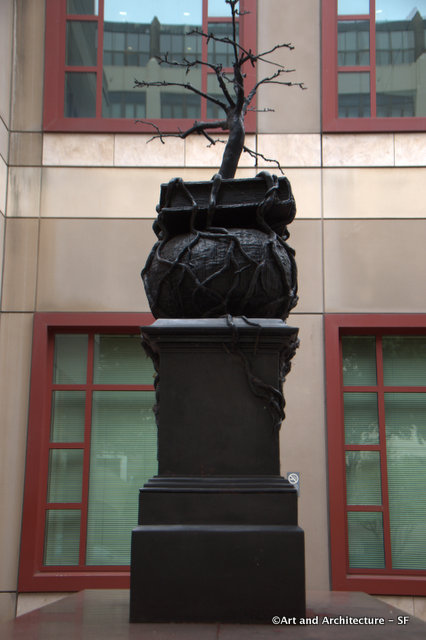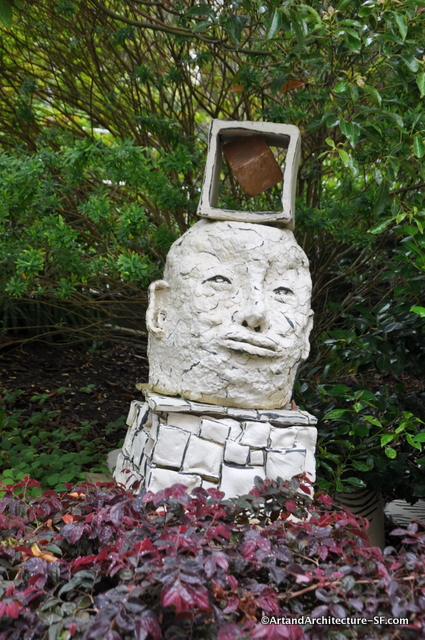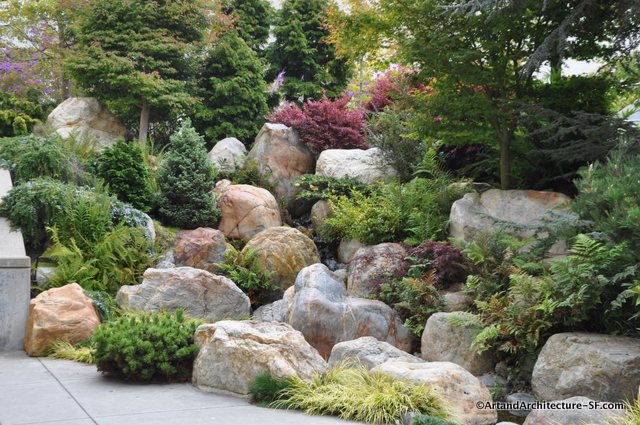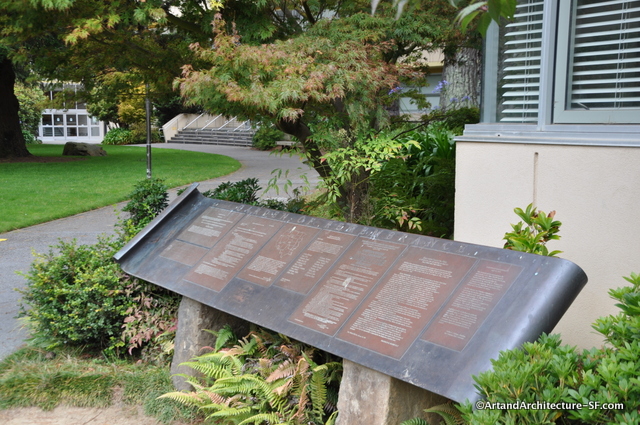400 Parnassus
UCSF Medical Center
Inner Sunset
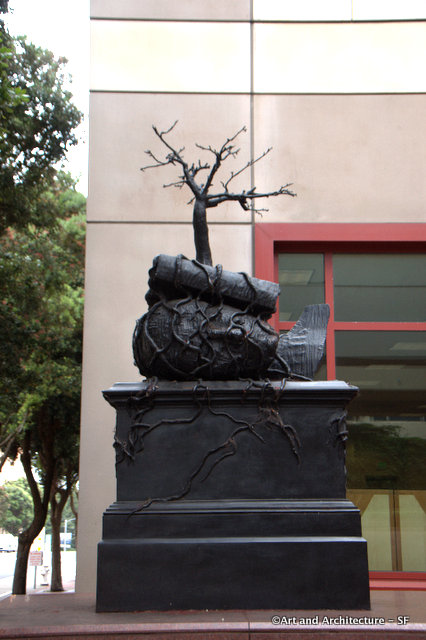 Regardless of History by Bill Woodrow
Regardless of History by Bill Woodrow
Bill Woodrow (1948) was one of a number of British sculptors to emerge in the late 1970s onto the international contemporary art scene.
Woodrow’s early work was made from materials found in dumps, used car lots and scrap yards, partially embedded in plaster and appearing as if they had been excavated. He went on to use large consumer goods, such as refrigerators and cars, cutting the sheet metal and allowing the original structure to remain identifiable, with the cut-out attached as if by an umbilical cord to the mother form. Collecting all manner of things, altering them and giving them a new context, allowed Bill Woodrow an element of narrative in his work.
Regardless of History is a quarter scale version of a sculpture with the same title created for the empty fourth plinth in Trafalgar Square in London, England, which was installed there from the spring of 2000 to the summer of 2001. Bill Woodrow chose to explore a recurring theme in his work—challenging and questioning man’s inability to learn the lessons of the past. A critic has observed that by placing the book over the man’s ears and the tree’s roots over his eyes, Bill implies that mankind listens to history but cannot see the lessons. We carry on ‘regardless of history’—an appropriate symbol and reminder for the entrance to a library. However, the work also evokes the theme of human frailty and of the strength and importance of knowledge and understanding.
